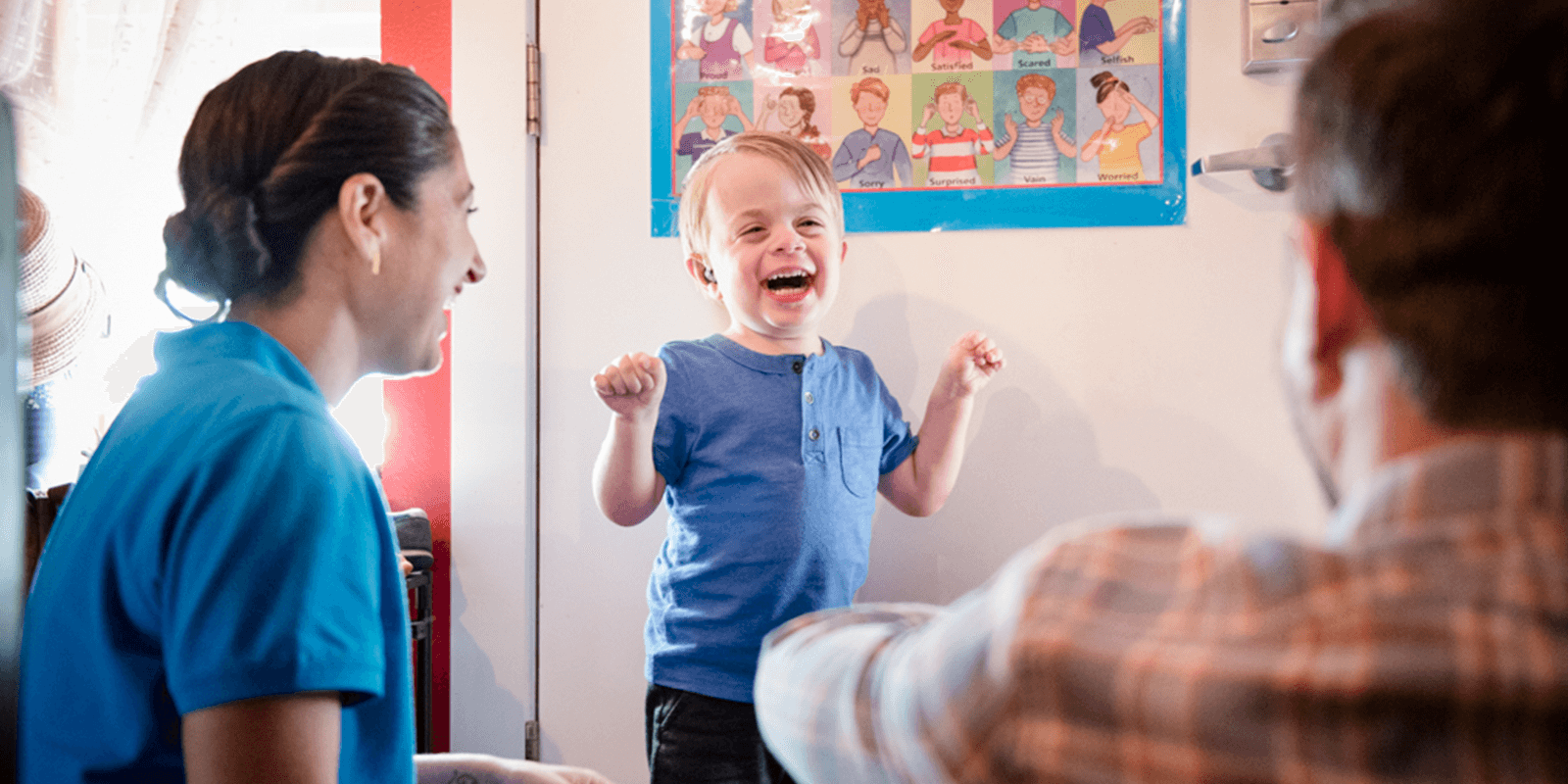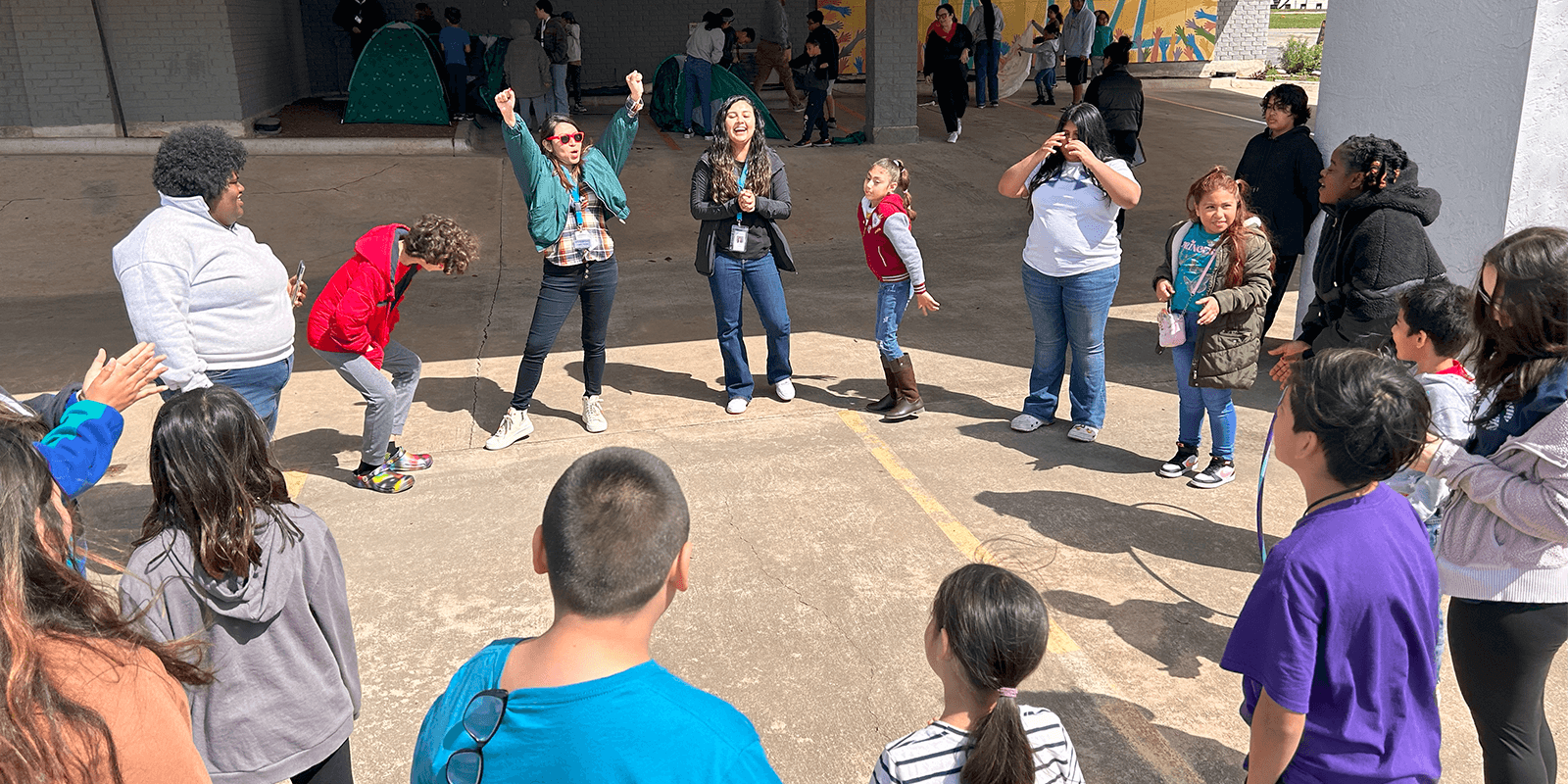Role-Play Helps Kids with Emotions

Category: Parenting Tips
February 28, 2024
Children learn about their emotions in the same way they learn about most things: through their parents and caregivers. But we all know that young kids can have tantrums, scream, cry and yell… and certainly they didn’t learn that from us, right!?
Two and three-years-olds usually have some language to describe their feelings, but not the self-control to appropriately manage them every time. It’s okay for kids (and you!) to get upset or angry, but learning techniques to calm down can have a life-long impact. Here’s a great article about how self-regulation develops and why it’s important.
Using Role-Play to Teach
When a child is in the red zone (en español), it’s not a good time to do any teaching. Your only goal is to help them calm down (more on that later!).
Using language about feelings and emotional regulation during play is a great way to work on those skills in a fun, safe, age-appropriate way.
Our Healthy and Fair Start program uses an activity called “Bears with Feelings” to help families start talking about emotions with young children. It takes the stress out of both parent and child to focus on the actions and emotions of the toys, rather than themselves.
What you need:
- Stuffed animals, dolls or action figures
- Hand-held mirror
- Books about feelings or childhood situations
Bears with Feelings
As you set up a pretend situation with the animals (a tea party, a picnic, a game), include relatable situations that may bring up emotions from a child. For example, “Oh no, teddy spilled her tea!” or “Aww, dolly lost the race.” And then ask your child to think about how the stuffed animal might feel.
Show the child the mirror and ask: Can you show me what your face looks like when it’s sad? What about when you’re excited?
Offer suggestions for what the stuffed animal may say, for example, “I spilled the tea! Let’s find something to clean it up,” or “Ugh. I lost! It was a good race. Let’s do it again!”
The idea is that you’re creating scenarios that may be triggers for your child, and letting them explore feelings, emotions, reactions and language through play.
At this age, you’re keeping emotions really simple: Sad, mad, happy, scared. Try not to bring in too many emotions.
Why We Do this
Toddlers are learning to deal with ups and downs. They want to be independent but sometimes can’t yet, and it leads to power struggles, anxieties and frustration.
Their ability to regulate emotion improves with age(1). Helping your child recognize and label feelings gives them better control and confidence in communicating their needs.
Kids who struggle with self-regulation may:
- Have a harder time making or keeping friends.
- Can affect the whole household, including siblings.
- May hurt themselves or others.
On the other hand, kids who are comfortable having big feelings and navigating through them have an easier time holding attention, problem-solving, waiting and taking turns. Read more about emotional regulation in children.
Download Free Feelings Chart
As your child gets older, it can be helpful for kids to see real faces and emotions. Here’s a link to a simple emotion chart that our staff uses with kiddos. You can add more complicated feelings like worry and excitement.
Role play can also prepare kids for novel situations like starting daycare, going to a new place, trying a new food, and many more situations that can be difficult for children.
Share your feelings with them too! Same days you may feel sad or tired. It’s okay to share these emotions with your child and reassure them that you’re able to manage them. Remember, the more you can model positive behaviors, the easier it will be for your child do it too. This may include saying things like:
- “I’m feeling tired this morning and I am trying to have the energy to play. It helps me to put on some music to lift my mood. I like songs that make me want to dance.”
- “I’m frustrated about something that happened at work today. I’ll be ok. I just need to get some fresh air. Let’s go for a walk.”
How to Help Your Child (and You!) Regain Calm
Co-regulation is key to teaching self-regulation! That means that kids aren’t yet able to calm themselves down. They need you to serve as a mirror to what they should be doing.
First, let them have their feelings. It’s okay for kids to cry, feel frustrated, talk back and even yell. This is normal and age appropriate. It is hard on parents, but we’re in it together and there are strategies to manage your own response.
To help your child calm down, you have to remain calm.
Tips for Co-regulation
- Sit near your child and just breathe. Use big, loud breathes, or just hum a quiet song. Anything that helps you re-center.
- Pick up a stuffed animal or a fidget toy. That may calm you and draw your child’s attention.
- Use calming phrases like: I’m here. It’ll be ok.
And plan ahead by thinking about the activities that bring out certain emotions more frequently. Just being aware of situations that are triggers for your kids can help you—and them—be better prepared.
Setting up a calm down corner can also help. It can be a small, cozy spot or pillow that has some books, coloring, or stuffed animals. The calm down corner is not for punishment! It helps give kids some control when they feel upset. You’ll be amazed when your kids start going to the calm down corner without prompting!
Here are a few books recommended by our staff:
- Little Monkey Calms Down by Michael Dahl
- Calm-Down Time by Elizabeth Verdick
- The Calm Down Jar by Jennifer Jones (*make a calm down jar for co-regulation too!)
It’s hard to be a parent! It’s also hard to be three! Any Baby Can helps parents and their kids navigate this relationship and set the family up for success.
(1) Eisenberg N, Spinrad TL, Eggum ND. Emotion-related self-regulation and its relation to children's maladjustment. Annu Rev Clin Psychol. 2010;6:495-525. doi: 10.1146/annurev.clinpsy.121208.131208. PMID: 20192797; PMCID: PMC3018741.
Share:
Share:
Share:
RELATED RESOURCES
The first few years of a child's life are so important! Get the support you need.
Free classes in English and Spanish for anyone looking to build their parenting skills.
Activities that promote learning and development, as well as encourage bonding.





